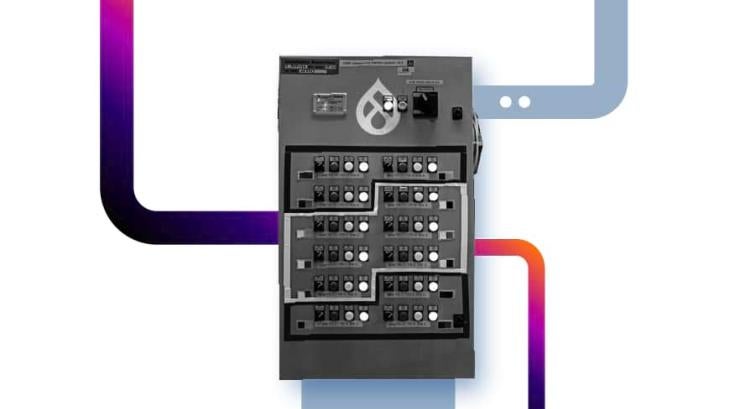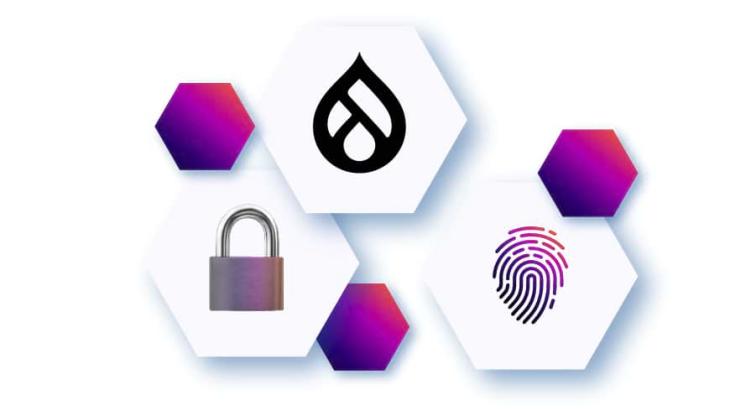Filters
Content Type
Topics
Threat Modeling Frameworks: The Unsung Heroes of Cybersecurity
The simple act of locking your door at night is a basic form of threat modeling. You're assessing a potential risk (an intruder) and taking a precautionary measure based on the level of threat you perceive.
The same strategy applies to the grander and more complex area of cybersecurity. Unfortunately, this important concept remains underappreciated or misunderstood by many.
Security often becomes a checklist item — a means for developers to appease the security team within an organization. This approach is flawed, leading to strained relationships between web and security teams, unnecessary spending on security solutions and a general lax control of sensitive information.
It's time we adopt a more comprehensive approach to threat modeling. In this article, we’ll guide you through different threat modeling frameworks. We’ll help you understand the nuances of each framework so you can choose the one that aligns best with your security objectives, resource availability and the specific risks your organization faces.
An Introduction to Threat Modeling Frameworks and Methodologies
Threat modeling is a structured approach that involves analyzing the various components of a system, identifying potential vulnerabilities, determining potential threats and creating strategies to address security risks effectively.
However, implementing threat modeling is not one-size-fits-all and can be complex, particularly in large-scale or intricate systems. Fortunately, there are threat modeling frameworks that provide structured methodologies, guidelines and tools to facilitate the threat modeling process, making it more systematic and efficient.
Different organizations may find different methodologies more suited to their specific needs. It’s also common for several methodologies to be used in conjunction, allowing for a more thorough and nuanced threat modeling approach.
Several factors can influence your decision-making process. Guidance from authoritative bodies such as the National Institute of Standards and Technology (NIST) can offer valuable insights into best practices and standards for threat modeling, with the core premise being to identify, protect, detect, respond and recover.
Ask yourself:
- What do we want to accomplish? Pinpoint the objectives of the project.
- What are we working on? Understand the scope and boundaries of the project or system.
- What can go wrong? Identify potential threats and vulnerabilities that could compromise the integrity, availability or confidentiality of the system.
- What are we going to do about it? Develop strategies and measures to mitigate identified risks.
- Did we do a good job? Evaluate the effectiveness of the threat modeling process and the implemented security measures.
Now, let’s explore the most widely used threat modeling frameworks and methodologies in cybersecurity.
Decoding The Strengths of STRIDE, PASTA and DREAD
STRIDE
Developed by Microsoft, STRIDE is an acronym that represents a structured approach to analyzing security risks by considering six different types of threats:
- Spoofing: This involves an attacker pretending to be someone else, such as using someone else's credentials to gain unauthorized access.
- Tampering: Tampering threats involve unauthorized modification of data or systems. This could include altering data, modifying software, or changing configurations.
- Repudiation: Repudiation refers to the act of denying one's involvement in a particular action or transaction, despite evidence suggesting otherwise. Imagine a scenario where a user claims they didn't authorize a financial transaction, even though records clearly show their involvement. This denial of responsibility can create disputes and undermine the integrity of system transactions.
- Information Disclosure: This refers to threats where unauthorized parties gain access to sensitive information. It could involve accessing files, intercepting communication or eavesdropping.
- Denial of Service (DoS): This attack aims to disrupt the availability of a system or service, often by overwhelming it with excessive requests or exploiting vulnerabilities to crash the system.
- Elevation of Privilege: This type of threat involves an attacker gaining higher levels of access or privileges than they are authorized to have. For example, an attacker might exploit a vulnerability to escalate their privileges from a regular user to an administrator.
Here are some of the common attacks related to STRIDE:
- Cookie Replay (Spoofing): Attackers may intercept and replay cookies to impersonate legitimate users and gain unauthorized access to the system.
- Session Hijacking (Spoofing): Attackers may hijack active user sessions to gain unauthorized access to sensitive information or perform malicious actions.
- SQL Injections (Tampering): Attackers may inject malicious SQL queries into input fields to tamper with the application's database and extract or modify sensitive data.
- Website Defacement (Denial of Service): Attackers may deface the website or disrupt its normal operation to deny service to legitimate users.
STRIDE is valuable during the initial design phase and throughout the development process. As new features are added or existing code is modified, developers can revisit the STRIDE analysis to ensure that security considerations are incorporated into the changes.
But, despite its effectiveness, using STRIDE for threat modeling:
- Can be time-consuming and resource-intensive to conduct thorough analysis, particularly for complex systems or applications.
- Requires ongoing effort and resources to maintain an up-to-date threat model throughout the development lifecycle.
PASTA
PASTA (Process for Attack Simulation and Threat Analysis) is a risk-centric threat modeling methodology used to identify potential threats and vulnerabilities in software applications or systems. It incorporates elements of both risk management and security testing, making it comprehensive.
Here's a breakdown of the PASTA methodology:
- Preparation: In this phase, the objectives and scope of the threat modeling exercise are defined. Key stakeholders are identified and resources are allocated accordingly.
- Asset Identification: Assets (including data, hardware, software and personnel) are identified and prioritized based on their criticality to the organization.
- Security Objectives: Security objectives are established to guide the threat modeling process. These objectives define what needs to be protected and from what threats.
- Threat Profiling: Threat actors and their potential motivations, capabilities and attack techniques are identified. This step helps in understanding the potential threats the system may face.
- Vulnerability Assessment: The system’s vulnerabilities, like weaknesses in software, configurations or processes that could be exploited by threat actors, are identified and analyzed.
- Risk Analysis: Risks are evaluated based on the likelihood of a threat exploiting a vulnerability and the potential impact on the organization. They are then prioritized based on their severity.
- Countermeasure Selection: Appropriate countermeasures are selected to mitigate identified risks. These may include technical controls, process improvements or organizational changes.
- Mitigation Planning: A mitigation plan is developed to implement the selected countermeasures. It often includes timelines, responsibilities and resource requirements.
- Results Communication: The results of the threat modeling exercise are communicated to relevant stakeholders, including management, development teams and security personnel. This ensures that everyone is aware of the identified risks and the proposed mitigation measures.
PASTA is a flexible and iterative methodology that can be adapted to different applications and development environments. It offers a complete approach that encompasses the perspectives of both attackers and defenders.
By considering the entire attack surface of an application and understanding the objectives and tactics of potential threat agents, PASTA enables organizations to develop a more thorough understanding of their security posture.
However, PASTA also has its negatives:
- Requires a high level of expertise in cybersecurity and threat analysis. Organizations may need to invest significant time and resources in training and skill development to fully leverage the benefits of the methodology.
- Conducting a PASTA analysis can be time-consuming, particularly for complex applications or environments.
- Does not provide specific guidance on addressing the risks identified during the analysis process. While PASTA helps organizations identify and prioritize security threats, it is up to the organization to develop and implement mitigation strategies to address those risks effectively.
DREAD
DREAD is a framework for evaluating the severity of threats based on five key factors:
- Damage: The potential impact or severity of the threat if it were to be realized. This includes considering the extent of data loss, financial damage, or harm to individuals or organizations.
- Reproducibility: The likelihood that the threat can be reproduced or exploited by an attacker. This involves assessing how easy or difficult it would be for someone to carry out the threat.
- Exploitability: The ease with which an attacker can exploit the vulnerability or weakness in the system. This considers factors such as the availability of tools or resources needed to exploit the vulnerability.
- Affected Users: The number of users or systems that could be affected by the threat. This includes assessing the potential impact on different stakeholders or user groups.
- Discoverability: The likelihood that the threat will be discovered or detected by security measures or by the affected users themselves. This involves considering factors such as the visibility of the vulnerability and the effectiveness of monitoring and detection mechanisms.
Each of these five factors is typically ranked on a scale from zero to ten to assess the severity of individual threats. These scores are then totaled to calculate an overall risk score for the threat. A higher score indicates a higher risk associated with that particular threat and mitigation strategies should be implemented promptly to reduce the likelihood of an attack.
DREAD is often used in conjunction with other security frameworks to provide a more comprehensive assessment of threats. For example, organizations might use STRIDE to identify potential threats and vulnerabilities and then apply the DREAD framework to assess the severity of each threat.
However, DREAD has a couple of limitations:
- Focuses solely on technical threats and does not consider other factors that could impact severity, such as the potential impact on business operations or reputation. This means that organizations may overlook critical risks that are not purely technical in nature.
- Requires users to have substantial cybersecurity expertise to accurately score each risk. Without a deep understanding of cybersecurity principles and practices, individuals may struggle to assess the severity of threats effectively, leading to inaccurate risk assessments and potentially ineffective mitigation strategies.
Advanced Threat Modeling: Understanding CVSS, Attack Trees and Trike
Common Vulnerability Scoring System (CVSS)
Developed with the expertise of the NIST and maintained by the Forum of Incident Response and Security Teams (FIRST), CVSS is a free and open industry standard designed to assess the severity of computer system security vulnerabilities. It provides a way to capture the principal characteristics of a vulnerability and produce a numerical score reflecting its severity.
The score can then be translated into a qualitative representation (such as low, medium, high and critical) to help organizations make informed decisions about their response strategies.
The main advantage of using CVSS is its ability to provide both a standardized framework for rating vulnerabilities and a uniform way to convey the characteristics and impacts of such vulnerabilities. This standardization is crucial for:
- Helping teams across the globe speak a common language when it comes to cybersecurity threats.
- Identifying the impacts of vulnerabilities within an organization’s unique context.
- Determining the prioritization of responses and resources to address identified vulnerabilities effectively.
The collaboration between NIST and FIRST ensures that CVSS remains relevant, up-to-date and accessible. Both organizations offer online calculators for CVSS scores, enabling users to assess the severity of vulnerabilities with ease. These tools are important for security teams, allowing for quick calculations that inform the urgency and nature of the response required.
Implementing CVSS scoring within an organization's security strategy allows for a more nuanced approach to vulnerability management. By quantifying the severity of vulnerabilities, teams can prioritize their efforts more effectively, focusing on those issues that pose the greatest risk to their operations.
Attack Trees
Attack Trees are diagrams that visually and systematically represent the various tactics an attacker might deploy to achieve their nefarious goals. By delineating the potential paths of attack, from the overarching objective down to the individual steps needed to get there, Attack Trees provide an invaluable framework for anticipating and mitigating security threats.
At the heart of an Attack Tree lies the root node, which represents the primary goal of the attack. This goal could range from gaining unauthorized access to sensitive information and disrupting service operations to compromising the integrity of a system.
Pro tip: Map who has access to what data and resources, considering the worst that could be done with that access. For sensitive systems, implement the least access to reduce the harm a malicious or tricked human can cause."
– David Strauss, Co-Founder & CTO
Branching out from this root are the various methods or paths – an attacker could potentially employ to achieve their objective, known as the leaves. These paths may involve numerous steps, including exploiting software vulnerabilities, conducting phishing campaigns, or breaching physical security measures.
The true power of Attack Trees lies in their ability to offer a thorough overview of potential attack vectors, which is instrumental for security teams in:
- Identifying and understanding the diverse threats their systems may face.
- Assessing the feasibility and potential impact of each attack pathway.
- Prioritizing security measures based on the likelihood and severity of different threats.
A critical concept often illustrated through Attack Trees is “lateral movement.” This term refers to the techniques attackers use to navigate through a network, moving from one system or account to another in search of valuable data or increased privileges. Lateral movement is a hallmark of sophisticated cyber attacks, allowing attackers to:
- Extend their foothold within a compromised network.
- Evade detection by leveraging legitimate credentials or exploiting weaknesses in internal security controls.
- Incrementally advance towards their ultimate target within the organization.
By anticipating potential paths for lateral movement, as depicted in Attack Trees, security teams can implement measures such as segmentation, multi-factor authentication and anomaly detection to limit attackers' ability to traverse a network undetected.
Additionally, Attack Trees are most effective when used in conjunction with other threat modeling methodologies, like STRIDE or PASTA. This allows organizations to map out potential attack pathways, evaluate the risks and develop more nuanced mitigation strategies.
Trike
Trike distinguishes itself by concentrating on two primary types of threats: privilege escalation and DoS. These threat types are particularly impactful because they strike at the heart of system integrity and availability (two pillars of cybersecurity).
Privilege escalation involves attackers gaining unauthorized access to elevated privileges or resources within a system they were not initially granted. By focusing on this threat, Trike helps organizations identify vulnerabilities that could allow such unauthorized elevation, prompting the development of stringent access controls and monitoring systems.
Trike's emphasis on DoS threats ensures that organizations assess their infrastructure's resilience against such attacks, leading to the implementation of robust mechanisms to maintain service continuity.
Trike systematically identifies threats so that they can then serve as a basis for creating more detailed Attack Trees, mapping out the various Tactics, Techniques and Procedures (TTPs) an attacker might employ to exploit these vulnerabilities. This integration allows for a layered approach to threat modeling, combining the defensive focus of Trike with the detailed pathway analysis provided by Attack Trees.
This threat modeling framework offers several advantages:
- Proactive Security Posture: By focusing on strengthening defenses against specific threat types, organizations can adopt a more proactive security stance, potentially preventing attacks before they occur.
- Prioritized Resource Allocation: Understanding the most critical vulnerabilities from a defensive viewpoint allows organizations to prioritize their security investments, focusing on areas with the highest risk of privilege escalation or DoS.
- Enhanced Incident Response: With a clear understanding of potential threat vectors, organizations can develop more effective incident response plans, reducing the time to detect and mitigate attacks.
Selecting the Right Framework for Your Security Needs
Selecting the appropriate threat modeling framework is crucial for an organization's capacity to effectively pinpoint, evaluate and address cybersecurity threats. Below is a concise guide to help you choose the best framework according to your organization's size, complexity and specific security concerns:
Complementary Methods
- Attack Trees are easy to understand, making them suitable for startups and organizations with limited resources, helping to visualize potential attack paths.
- CVSS assists in prioritizing vulnerabilities with a quantitative approach, enhancing any threat modeling effort.
- Trike focuses on defensive measures, particularly against privilege escalation and DoS attacks and works well alongside other methodologies.
From Understanding To Action: Enhance Your Cybersecurity With Pantheon
Recognizing the critical role of threat modeling in highlighting vulnerabilities, it's time to move from understanding to practical action to strengthen your cybersecurity defenses.
Pantheon is a WebOps platform designed to elevate your cybersecurity readiness. We offer 24/7 support to guide you through crises but also boast an array of built-in security features:
- Automated site monitoring and managed HTTPS ensure your site is both secure and trustworthy.
- Container-based infrastructure and DDoS protections guard against major threats, keeping your services running smoothly.
- Role-based access and SAML/SSO/MFA secure your internal operations, while Immutable Code safeguards against unauthorized changes.
- Pantheon’s Web Application Firewall (WAF) and Autopilot features make managing security easier and more effective.
- Advanced Global CDN is essential for sites requiring top-tier security, providing speed and protection on a global scale.
By combining the right threat modeling framework with Pantheon’s comprehensive security features, you can significantly fortify your digital presence.
Join Pantheon today to benefit from our powerful security features that protect, monitor and accelerate your site, ensuring your cybersecurity strategy is robust and resilient!


